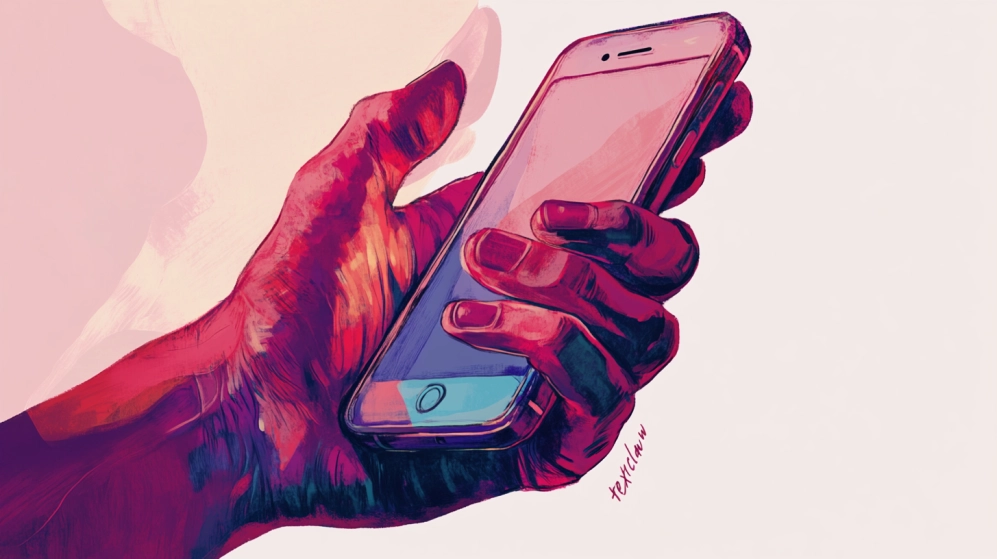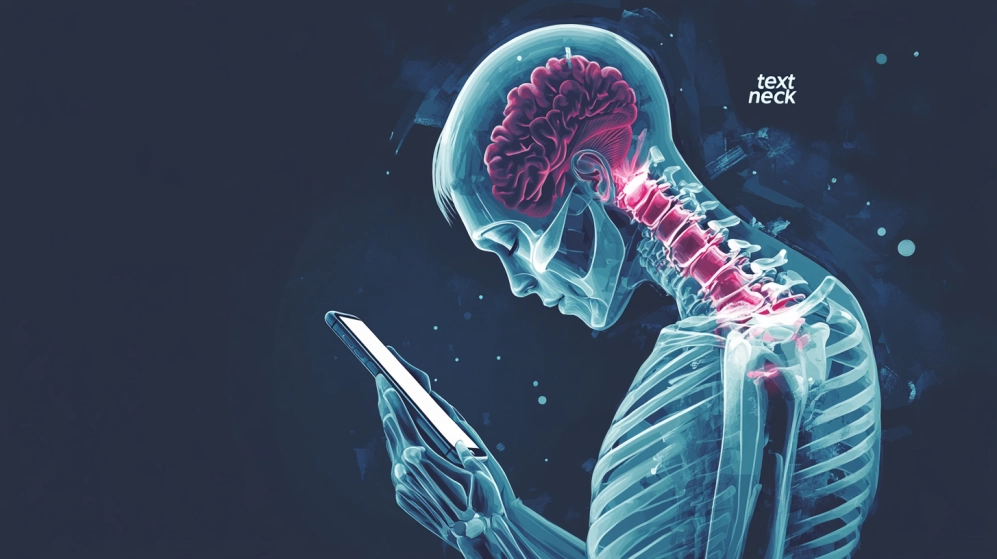In today’s hyperconnected world, smartphones have become an indispensable part of our daily lives. From waking up to an alarm to winding down with a bedtime story app, our reliance on these devices is ubiquitous. However, this constant interaction isn’t without consequences. Beyond the well-known issues like eye strain and reduced attention spans, there are hidden dangers associated with smartphone overuse that can lead to physical injuries and cognitive impairments.
This article covers these less-discussed problems and offers strategies to prevent them.
Common Injuries Associated with Excessive Cell Phone Use

“Text Claw” and Repetitive Strain Injuries
Repetitive motions, such as scrolling, typing, and holding the phone, can lead to musculoskeletal disorders in the hands and wrists. One emerging condition is text claw, characterized by cramping and soreness in the fingers, wrist, and forearm. This is a form of repetitive strain injury resulting from overuse of the thumb for typing and swiping.
Moreover, the median nerve, which runs through the wrist, can become compressed, leading to symptoms similar to carpal tunnel syndrome. T
his isn’t just limited to office workers; smartphone users are increasingly reporting numbness and tingling in their hands due to prolonged device handling.
“Smartphone Pinky” and Ulnar Nerve Compression
A newer phenomenon, dubbed smartphone pinky, refers to a deformity or indentation of the little finger caused by supporting the weight of the smartphone for extended periods. This habit can exert pressure on the ulnar nerve, potentially leading to nerve compression and subsequent loss of sensation or motor function in the hand.
Postural Problems: “Text Neck” and Beyond
Excessive smartphone use often leads to poor posture, commonly referred to as text neck. This condition arises when users tilt their heads forward to look down at their devices, putting excessive strain on the cervical spine. Over time, this can result in chronic neck and shoulder pain, early spinal degeneration, and even disc herniation.
But the impact doesn’t stop there. Poor posture can affect respiratory function by compressing the lungs, reducing oxygen intake and leading to fatigue and diminished cognitive performance.
Ocular Issues: Beyond Digital Eye Strain
While digital eye strain is a well-known issue, prolonged smartphone use can contribute to more serious conditions like “screen-induced myopia”. Constant focusing on close-up screens can cause the eye muscles to become overworked, leading to nearsightedness. There’s also an increased risk of developing dry eye syndrome, as users tend to blink less when staring at screens, reducing tear production and leading to ocular discomfort.
The Neurological Impact of Overusing Your Phone
Neuroplasticity and Attention Span
Smartphone overuse can alter the brain’s neural pathways through the process of neuroplasticity. Constant multitasking and rapid switching between apps can reduce the ability to sustain attention. This may contribute to conditions resembling attention deficit hyperactivity disorder (ADHD), even in individuals without previous symptoms.
“Digital Dementia”
A concept emerging from neuroscientific research is digital dementia, where overreliance on digital devices diminishes cognitive abilities. With smartphones storing our contacts, calendars, and even memories through photos and social media, we’re less inclined to engage memory centers of the brain. This can lead to declines in memory retention and reduced problem-solving skills.
Circadian Rhythm Disruption and Sleep Disorders
The blue light emitted by smartphone screens can suppress the production of melatonin, the hormone responsible for regulating sleep cycles. Disruption of the circadian rhythm can lead to insomnia, sleep deprivation, and associated health problems like impaired immune function and mood disorders.
Social and Cognitive Consequences
Impaired Social Skills and Empathy
While smartphones connect us digitally, they can disconnect us socially. Excessive smartphone use can impair face-to-face communication skills and reduce the ability to read non-verbal cues. This can hinder the development of empathy and emotional intelligence, crucial components of social interaction.
The “Google Effect” on Memory
Also known as “digital amnesia,” the tendency to forget information that can be easily accessed online is another cognitive consequence. Relying on smartphones for quick answers may weaken our long-term memory formation and information retention, as we’re less likely to encode the information deeply.
Preventative Measures: Mitigating the Risks
Ergonomic Practices for Smartphone Use
Adopting ergonomic practices can significantly reduce the risk of physical injuries:
- Hold your phone at eye level to minimize neck strain.
- Use both hands to type and navigate to distribute the workload more evenly and reduce strain on the thumbs.
- Take frequent breaks to stretch and relax your hands, wrists, and neck muscles.
- Utilize voice-to-text features to reduce typing.
Mindful Usage and Digital Diets
Implementing a “digital diet” can help manage smartphone overuse:
- Set specific times for checking your phone and avoid constant notifications.
- Use apps that track and limit screen time to promote awareness of usage patterns.
- Engage in “dopamine fasting,” deliberately reducing stimulating activities to reset the brain’s reward pathways.
Blue Light Filters and Night Mode
To combat circadian rhythm disruption:
- Activate blue light filters or night mode on your devices during evening hours.
- Establish a “screen curfew” at least an hour before bedtime to allow melatonin levels to rise naturally.
- Consider wearing blue light-blocking glasses if screen use at night is unavoidable.
Cognitive Exercises and Real-world Interactions
To offset neurological and cognitive impacts:
- Engage in activities that stimulate memory and attention, such as puzzles, reading, or learning a new skill.
- Prioritize in-person social interactions to enhance social skills and emotional connections.
- Practice mindfulness meditation to improve focus and reduce stress.
Conclusion
While smartphones offer unparalleled convenience and connectivity, it’s crucial to be aware of the hidden dangers of overuse. By understanding the potential physical, neurological, and social impacts, we can take proactive steps to protect our health. Implementing ergonomic practices, establishing mindful usage habits, and prioritizing real-world interactions can help mitigate these risks. Our relationship with technology should enhance our lives, not hinder our health. By being mindful of our smartphone use, we can ensure that we remain in control of our devices—not the other way around.





